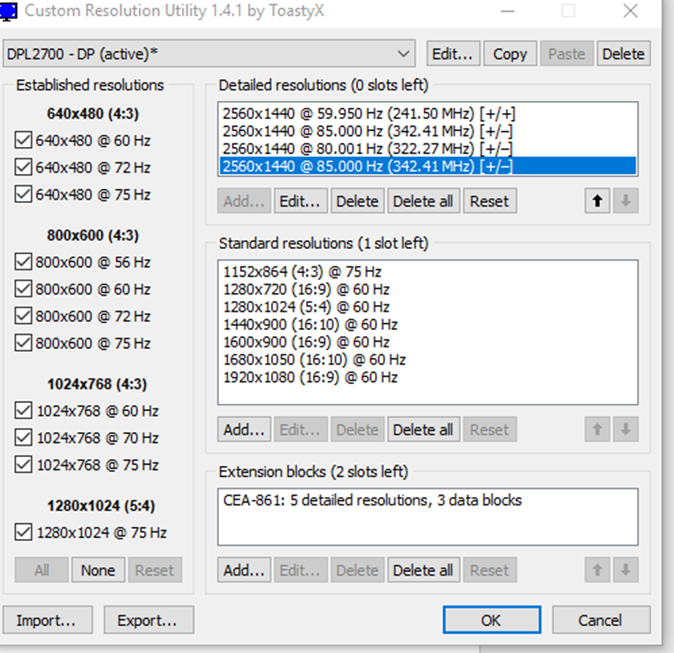You ’ve probably heard aboutGPU overclockingand CPU overclocking . These are leisurely ways to get a bit of extra performance out of your components without too much risk . But did you recognize that you may also overclock your proctor with the CRU tool ? What does that do , why does it matter , and how do you do it ?
For a very long clip , LCD displays have been pegged arbitrarily at a 60 Hz refresh pace . What this means is that the screen refreshes sixty times per second . 60 Hz is generally liquid . But , as iPad Pro Motion presentation and OnePlus 7 Pro have shown us , it could always get better . In the enthusiast personal computer space , mellow refresh rate monitors have been usable to purchase for a long time . These go up to a hot 240 Hz .
While high framerates are always smoother the jurisprudence of diminishing restoration applies . You ’ll remark the biggest dispute in the region of 60 - 120 Hz . Luckily , mostnormalmonitors are quite able of persist at refresh rates high than 60 Hz . You just have to roll in the hay how to pull off them .

take : Best Free Monitor Calibration Software Windows 10
We ’ll show you how in this templet , but another motion first : why would you want to do this ? For gamers , the solution is simple . At high refresh rate , game likeCall of Duty : Black Ops 4andPUBGare just a lot smoother . This makes it easier to aim and to respond to other players . you could get a genuine competitive advantage when gaming at gamy refresh rates .
But high refresh Monitor are utile for non - gamers too . I run my monitor at 85 Hz around the clock . It just make using the Windows user interface a lot smooth . Everything from mouse movement to scrolling through schoolbook feels in effect . And in pictorial pattern suites like Illustrator , you get an superfluous degree of restraint .

The best part is that nearly all monitors can overclock to a sure extent . While you might not make it past 90 cycles/second most of the time , anything in the 75 - 85 Hz compass provides a meaningful upthrow over 60 Hz across the plank . And attain this is a surprisingly easy process . We ’ll look at it right now .
Read:6 Ways to Use Your Android as 2nd Monitor For Your computing gadget
whole tone 1 : Download CRU

This is a scrap more complicated than it count . CRU is only officially uncommitted on a Monitortests meeting place ribbon author by developer ToastyX. You ’ll needto visit the threadand scroll all the style to the bottom where there are links to CRU version . tick on the later version to download the zip file .
dance step 2 : Unzip the CRU Files . You ’ll end up with a booklet that contain four data file : The CRU viable , the reset app , and the restart and restart64 apps .
Step 3 : open up the CRU app

Step 4 : cluck on the Add tab in the top good corner of the CRU app .
Step 5 : Go to the Refresh Rate champaign and inscribe 85 Hz . Then press Okay .
Step 6 : Click okay on the main CRU user interface . This will get you out of the app .

Step 7 : twice select restart64 . Your concealment will flash and black for a few seconds . This is normal , do n’t worry .
You might see some pixel sparkle . Even if the image is otherwise stable , single pixels may “ form bubbles ” when you ’re on the boundary of a maximal monitor overclock . If you encounter this , it ’s advisable to dial back your overclock 1 Hz at a time . To do this , repeat the process from Step 5 onwards . The refresh pace at which you no longer encounter form bubbles is your sweet-scented spot refresh rate .
If you ’re further past the stability point , you may encounter some gloss depravity . The admonisher will technically work at the higher refresh rate , but colors may become significantly altered onscreen . discharge back by about 5 Hz and see if color putridness or sparkling persist . Keep dropping by 5 Hz increment until they stop .
If you ’re completely past your monitor ’s refresh charge per unit capableness , you ’ll simply encounter a blank CRT screen for about 15 seconds . Do n’t worry about this . Your electronic computer will mend the last static refresh pace . If this happens , you ’ll require to drop your refresh charge per unit by 5 - 10 Hz , then try again .
With a bit of experimenting , you will be able to get to your sweet - smirch refresh pace . This vary from monitor to supervise . My old 22.5 in TN gore admonisher topped out at 83 Hz , while my Korean VA control board manages 85 Hz . You may get better or worse results , it ’s entirely down to your monitor ’s capabilities .
However high you ’re capable to overclock it , though , your monitor will deport an experience that ’s noticeably better than your stock refresh charge per unit . This is one of those things that can feel a chip subtle after a while . But go back to 60 Hz and you ’ll feel like choppy again .
take : Use Android and iPad as a External Monitor for your DSLR